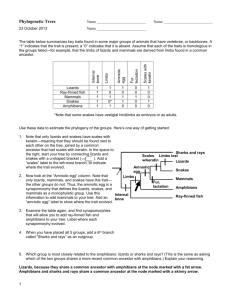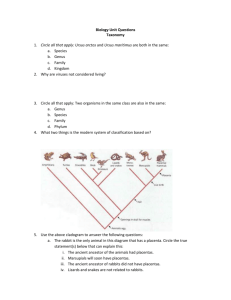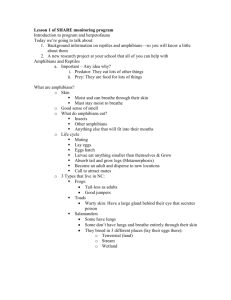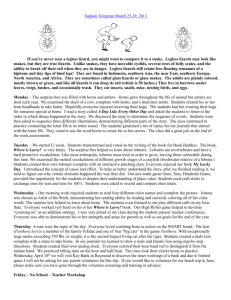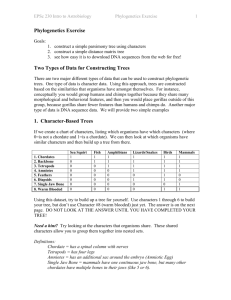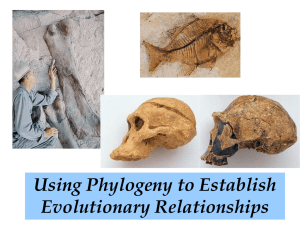Tree thinking module
advertisement
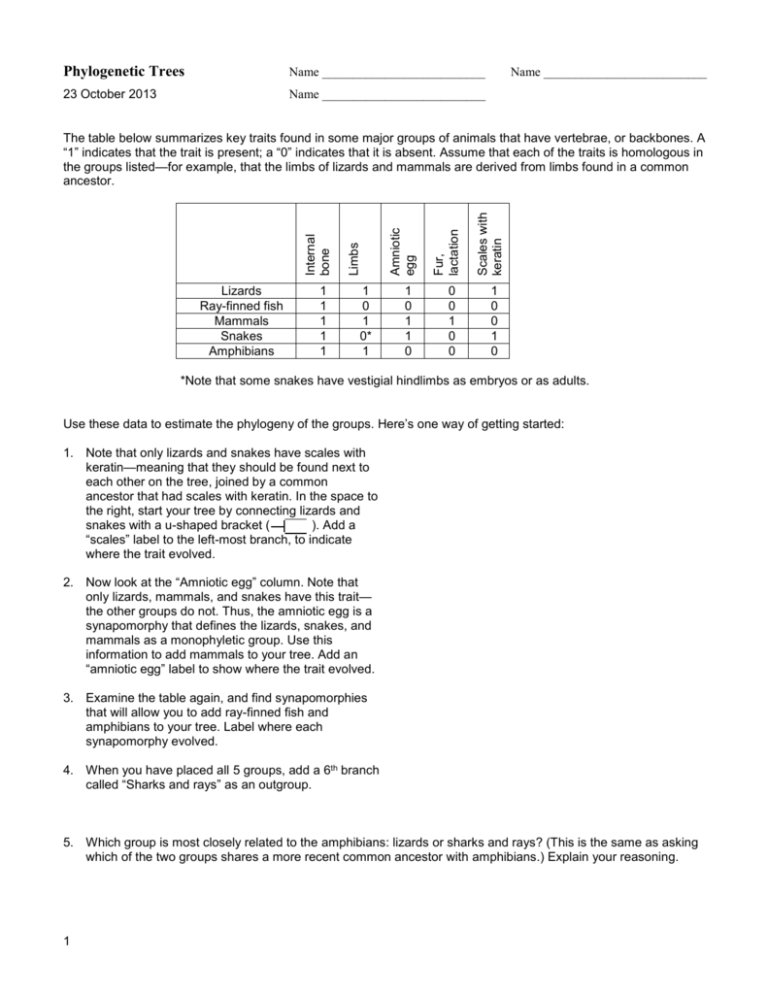
Phylogenetic Trees Name __________________________ 23 October 2013 Name __________________________ Name __________________________ Lizards Ray-finned fish Mammals Snakes Amphibians 1 1 1 1 1 1 0 1 0* 1 1 0 1 1 0 0 0 1 0 0 Scales with keratin Fur, lactation Amniotic egg Limbs Internal bone The table below summarizes key traits found in some major groups of animals that have vertebrae, or backbones. A “1” indicates that the trait is present; a “0” indicates that it is absent. Assume that each of the traits is homologous in the groups listed—for example, that the limbs of lizards and mammals are derived from limbs found in a common ancestor. 1 0 0 1 0 *Note that some snakes have vestigial hindlimbs as embryos or as adults. Use these data to estimate the phylogeny of the groups. Here’s one way of getting started: 1. Note that only lizards and snakes have scales with keratin—meaning that they should be found next to each other on the tree, joined by a common ancestor that had scales with keratin. In the space to the right, start your tree by connecting lizards and snakes with a u-shaped bracket ( ). Add a “scales” label to the left-most branch, to indicate where the trait evolved. 2. Now look at the “Amniotic egg” column. Note that only lizards, mammals, and snakes have this trait— the other groups do not. Thus, the amniotic egg is a synapomorphy that defines the lizards, snakes, and mammals as a monophyletic group. Use this information to add mammals to your tree. Add an “amniotic egg” label to show where the trait evolved. 3. Examine the table again, and find synapomorphies that will allow you to add ray-finned fish and amphibians to your tree. Label where each synapomorphy evolved. 4. When you have placed all 5 groups, add a 6th branch called “Sharks and rays” as an outgroup. 5. Which group is most closely related to the amphibians: lizards or sharks and rays? (This is the same as asking which of the two groups shares a more recent common ancestor with amphibians.) Explain your reasoning. 1 6. Which group is most closely related to the sharks and rays: Lizards or ray-finned fish? (This is the same as asking which of the two groups shares a more recent common ancestor with sharks and rays.) Explain your reasoning. 7. According to your tree, are mammals higher than amphibians? Explain why or why not. 8. Snakes don’t have limbs. Do they really belong in a monophyletic group with vertebrates that do have limbs? Explain why or why not. (If appropriate, add a “limbs lost” label to your tree.) 9. Relative to the common ancestor of all the bony vertebrates (meaning, the common ancestor of all of the groups on the tree except for sharks and rays), which of the groups on your tree has been evolving for the longest amount of time? Explain your reasoning. 10. Sharks and rays don’t have bony skeletons—they have cartilaginous skeletons that also occurred in their ancestors. Is either of the following statements correct? Explain why or why not. a) Sharks and rays are a basal (you could also say “primitive” or “ancestral”) group relative to the vertebrates. b) Cartilaginous skeletons are a basal (you could also say “primitive” or “ancestral”) trait relative to the bony skeletons of vertebrates. ********* Please turn the completed exercise in to your T.A. (and make sure that your names are legible!) ********* ****************** We’ll send you an answer sheet to the exercise on Monday, via email *************** 2
